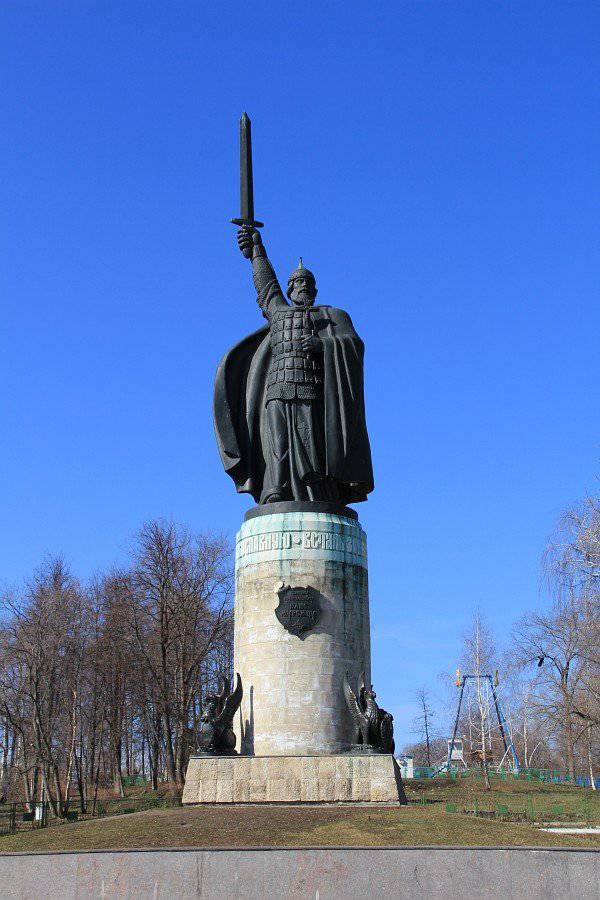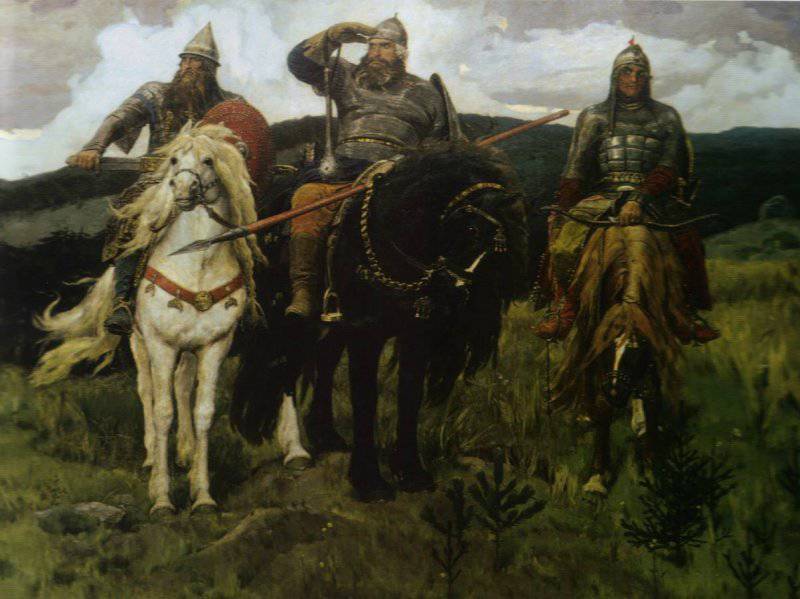Ilya Muromets - Svyatorussky bogatyr
“Some researchers are still skeptical about the reality of the existence of Ilya Muromets - his biography seems very fabulous to modern scientists,” says Sergey Khvedchenya, a researcher at the National Institute of History of Ukraine. “However, the materials collected by the researchers made it possible not only to restore the biography of the great Holy Russian hero, but also to answer some controversial questions about the life of Ilya Muromets, which puzzled many historians.”
Sensational evidence
In the distant 1988, the established Interdepartmental Commission conducted a scientific study of the surviving relics of Rev. Ilya of Murom. The results of the work were amazing. The remains belong to the man who died at the age of 45-55 years old, quite tall - 177 centimeters. Given the fact that in the XII century, the average population growth was 165 centimeters, Ilya, of course, was a very tall man for his time. Moreover, on the skeleton of Ilya, scientists have revealed traces of many battles - broken ribs, multiple fractures of the clavicle, traces of a sword, spears, swords. This confirmed the ancient myths that the hero Ilya of Murom was a mighty warrior and participated in fierce battles.
But most of all, scientists were struck by something completely different: they unanimously assert that, as indicated in folk legends, Ilya really could not walk on his own for a long time! According to the researchers, the main reason for this was an extremely serious disease - poliomyelitis or bone tuberculosis. This led to paralysis of the legs.
The hero Ilya Muromets was born in the period between 1150 and 1165 in the city of Murom. And he died when he was about 50 years old, as scientists assume, when Prince Rurik Rostislavich’s brother captured Kiev in 1204, when the famous Pechersk Lavra was destroyed and looted by the Allied Polovtsi. Death came from hitting a sharp weapon in the chest (sword or spear).
Terrible curse and miraculous recovery
Such a story was spread among the people. As if the grandfather of the future Russian hero Ilya of Murom was a real pagan and, refusing to recognize Christianity, once he cut an Orthodox icon with an ax. Since that time, the curse fell on his clan and all boys must be born cripples.
After 10 was born the grandson of Elijah, and it seemed that a terrible curse was fulfilled: the boy could not walk. Numerous attempts to cure him were unsuccessful. But Illya himself didn’t wilt, he persistently trained his arms, strengthened his muscles. However, having strong hands, he could not walk. Probably, he was repeatedly visited by thoughts of resigning himself to fate and permanently crippling.
But on the day when Ilya turned full 33 of the year, the impossible happened. Prophetic elders came to the father’s house - poor wanderers (kaliki walk-through) and asked Ilya to give water. He explained that he could not get up. But the guests, as if they had not heard him, and persistently repeated their request, which had already sounded like an order. And the ill Ilya, suddenly feeling an unprecedented power, first rose to his feet ...
Miraculous healing? But is it possible to assume that the strange guests managed to miraculously heal the seemingly incurable patient? There are various assumptions about this. Perhaps the wanderers were magicians or magicians and knew the secrets of healing ancient plots. It is not known for certain and the science is still unable to explain the fact of the healing itself ...
And yet, Ilya got up on his feet after long 33 years of real estate. And the scientists who conducted the study of the relics confirm the fact that the bone tissue of this person miraculously recovered. Moreover, as stated in the conclusion, after thirty years, Illya led a full-fledged life, which fully corresponds to the bylinas.
The exploits of the Russian hero
Since the moment of miraculous healing, the bogatyr Ilya of Murom, as is inherent in the heroes, accomplishes many feats. The most famous feat of the bogatyr is the battle with the gangster Nightingale the Robber, who occupied the direct road to the capital of Russia, Kiev, and did not allow “no cavalry or footmen”. Purification of the epic warrior of the direct route to Kiev (approximately 1168 year) is confirmed by historical facts. At that moment, when Ilya arrived in Kiev, Prince Mstislav sat on the throne, who ordered to organize the protection of the trade caravans going to the capital from the Polovtsy who had mercilessly robbed them. Most likely, the prince of Kiev entrusted this to his bogatyr Ilya Muromets, who was in the prince's retinue.
Nightingale was a robber who hunted for raids and thefts on the road, and the nickname stuck to him for his ability to whistle loudly. Ilya Muromets in a duel won the whistler and freed the "straight-line road", which undoubtedly had great economic importance. The cleansing of the direct path from the robbers did not go unnoticed and was equated by the people to this feat.
But if Ilya Muromets is really a historical person, why is there no mention of him in the annals about him as a Russian hero?
First, since that time very few written sources have been preserved. And this is not surprising, if we take into account the turbulent history of Russia. Hordes of various conquerors repeatedly burned and completely destroyed cities. Once during a fire burned and books from the library of the Pechersk Lavra.
Secondly, in the Germanic ancient poems, written in the thirteenth century, but based on earlier legends, there is a mention of the great bogatyr Ilya Russian. The legend says that in one very cruel battle the hero Elijah almost fell, but miraculously saved his life and made a vow to settle in the monastery, to devote himself to serving God and henceforth never to raise his sword. Ilya went up to the walls of the Lavra, threw off all the armor, but, however, he could not throw the sword to the ground. He became a monk of the Kiev Pechersk Lavra and spent most of his days in the cell in constant prayers.
But once the enemy approached the walls of the monastery. The mortal blow struck the abbot of Lavra right in front of Ilya. And then the hero, in spite of this vow, raised his sword again. But suddenly he felt that his legs refuse to serve him. At that moment, the enemy struck a fatal blow to his chest, but the forces left Ilya and he could no longer defend himself ...

The life of an epic hero after death
Bogatyr Ilya Muromets managed to survive his own death, leaving a noticeable imprint in the memory of people and have a huge impact on all subsequent generations.
But not only imperishable memory remained from the Russian hero. The body of Elijah, like the remains of other monks who are buried in the caves of the Pechersk Lavra, is incorruptible. But, unlike the remains of the Egyptian pharaohs, it turned into a mummy not because of the processing of mummifying compositions, but for reasons unknown to modern science. Orthodox believe that if the human body does not decompose, but gradually turns into power, this indicates a special gift of God, inherent only to the saints. They say that the relics of the holy Russian hero Ilya Muromets are able to heal those who suffer from terrible diseases of the spine and those who have completely paralyzed legs. The hero of epics continues to serve people after death ...

Information